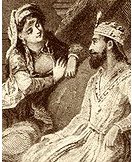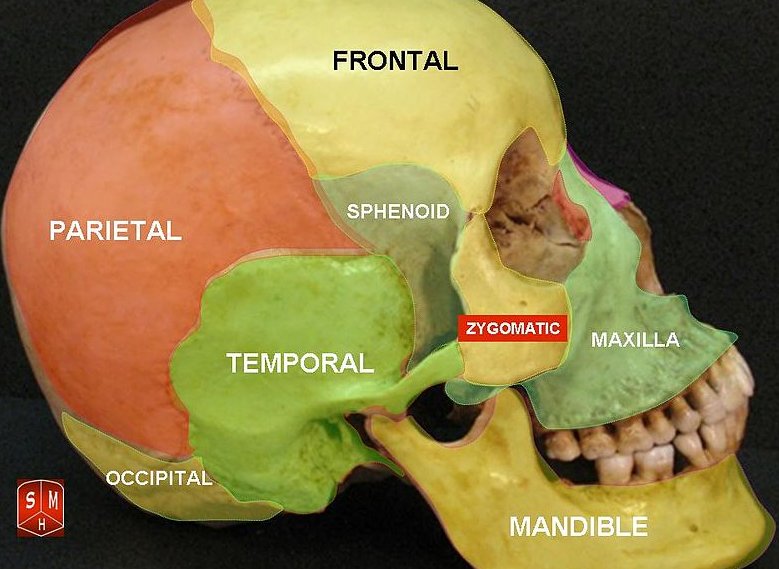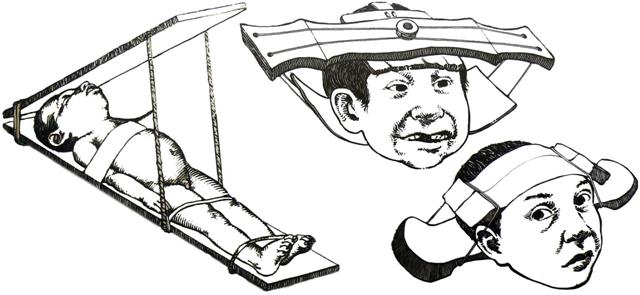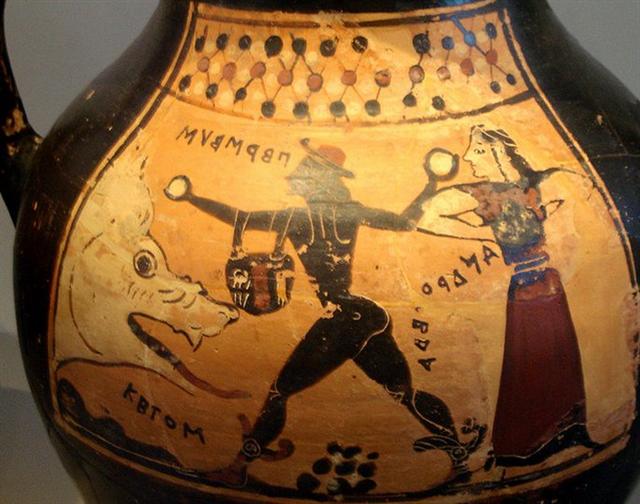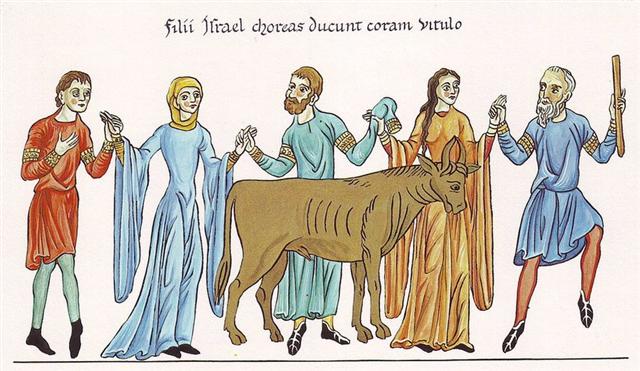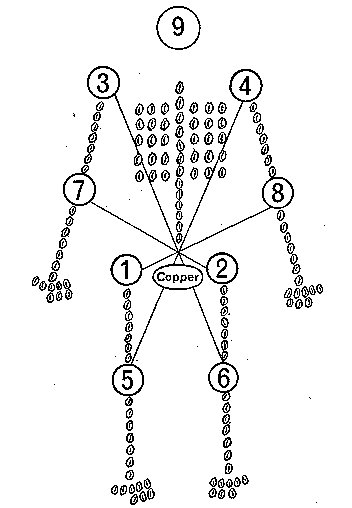There are myriads of pieces broken off from the great mirror (which once upon a time was truly reflecting the cosmos), and together they are threatening to mesmerize us.
... the strange hologram of archaic cosmology must have existed as a conceived plan, achieved at least in certain minds, even as late as the Sumerian period when writing was still a jealously guarded monopoly of the scribal class. Such a mind may have belonged to a keeper of records, but not of the living world, still less of the living thought. Most of the plan was never recorded. Bits of it reach us in unusual, hesitant form, barely indicated, as in the wisdom and sketches of Griaule's teacher, Ogotemmêli, the blind centenarian sage. In the magic drawings of Lascaux, or in American Indian tales, one perceives a mysterious understanding between men and other living creatures which bespeaks of relationships beyond our imagination, infinitely remote from our analytical capacity ...
In order to navigate it is necessary to doggedly follow the trail, instead of deviating whenever something interesting appears. And the nose of Canis Major is currently the place for Sirius. ... The Sothic cycle was based on what is referred to in technical jargon as 'the periodic return of the heliacal rising of Sirius', which is the first appearance of this star after a seasonal absence, rising at dawn just ahead of the sun in the eastern portion of the sky. In the case of Sirius the interval between one such rising and the next amounts to exactly 365.25 days - a mathematically harmonious figure, uncomplicated by further decimal points, which is just twelve minutes longer than the duration of the solar year ... In ancient Egypt they thought Sirius was behind the yearly rise of the Nile ... the seasonal cycle, throughout the ancient world, was the foremost sign of rebirth following death, and in Egypt the chronometer of this cycle was the annual flooding of the Nile ... The Egyptian X asterism can be relied upon: .jpg) From the Armpit of Orion (at Betelgeuze) time was running down to Naos at the 2nd of the shields in Argo Navis (enscribed with something twisted around or encircled it appears): 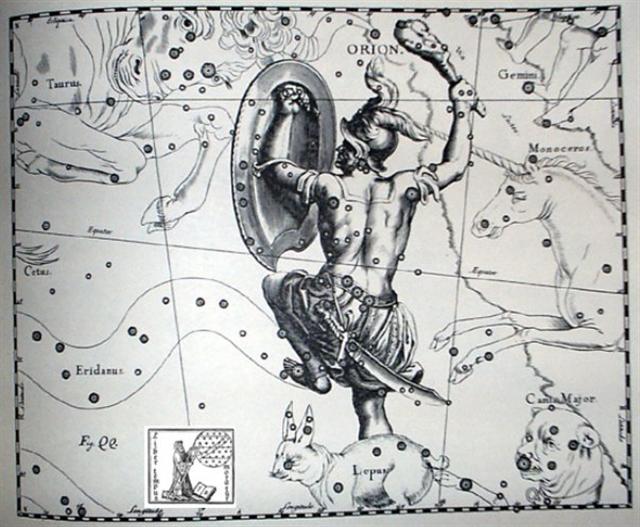  
The importance of Betelgeuze evidently stretches back at least to the time of the mammoths:
39 notches on the edges seem to establish a correlation with the number of the stolen water yam (uhi) variants. Stolen from Ma'eha: Ma'eha. Brightness, bright, to lighten, to brighten up; ku ma'eha-á, it has already lightened up. Vanaga. 1. Light, brightness; to shine, to be bright, to glimmer, to glow; maeha mahina, moonshine; maeharaa, sunrise. Maehamaeha, bright. Hakamaeha, to brighten. Mq.: maeoeo, bright, transparent. 2. To get out of the way. 3. Thin, slender, slight. Churchill.
According to my interpretation of Manuscript E this means there were 39 days stolen from the bright side of the year. ... Then the old man was glad. He kindled a large fire, and as he wanted to keep it to himself, he built a house with a door which snapped up and down like jaws and killed everybody that wanted to get in. But the people knew that he was in possession of fire, and the stag determined to steal it for them. He took resinous wood, split it and stuck the splinters in his hair. Then he lashed two boats together, covered them with planks, danced and sang on them, and so he came to the old man's house. He sang: 'O, I go and will fetch the fire.' The old man's daughter heard him singing, and said to her father: 'O, let the stranger come into the house; he sings and dances so beautifully.' The stag landed and drew near the door, singing and dancing, and at the same time sprang to the door and made as if he wanted to enter the house. Then the door snapped to, without however touching him. But while it was again opening, he sprang quickly into the house. Here he seated himself at the fire, as if he wanted to dry himself, and continued singing. At the same time he let his head bend forward over the fire, so that he became quite sooty, and at last the splinters in his hair took fire. Then he sprang out, ran off and brought the fire to the people ...
They were stolen by the back side of the year - by the occiputal side - viz. by Teke. Teke. Occiput. Teketeke, short (not tall); also: teke. Vanaga. Teke ki nei, as far as, until (? tehe 1). Teketeke, crest, ridge. Churchill.
If this is true it means we can guess the reason for the once upon a time popular method of prolonging the back side of the head (teke) on the youngsters.
It should mean the force of 39 was implanted on the baby - the force of fire would become a part of the new man, he would grow up to become a Stag.
From Alchita / Sirrah up to and including Spica / Adhil there were 20 days, and from Sirrah / Alchita to Adhil / Spica there were 19 days. The variable star Mira had a cycle of 332 days, or as Ismail Bouillaud had estimated it 333 days. ... Apart from the unusual Eta Carinae, Mira is the brightest periodic variable in the sky that is not visible to the naked eye for part of its cycle ... Surprisingly (mira), the star Mira could sometimes not be counted. 20 + 13 = 33 or 19 + 13 = 32. Which implies sometimes Spica would come 183 days after Adhil and sometimes 182 days after Adhil. The year should sometimes be counted 1 day shorter. 2 * 183 - 1 = 365.
18 (between 0h and *19) + 13 (between *19 and *33) + 8
(up to and including Bharani / Zuben Elgenubi) = 39.
This could all be regarded as a matter of
coincidence. However, the back side (teke) of
the mammoth ivory carving had 49 notches and this
number coincides with the day number for FEBRUARY
17: Tahe. 1. To run
freely, to flow (tehe 4). P Pau.:
tahe, a river. Mgv., Mq.,: tahe,
to run, to flow, to melt, to liquify. Ta.:
tahe, to run, to flow. 2. To smooth
out wrinkles (tehe 2). Churchill.
Tehe.
1. To come, to arrive. Tehe oka te
ikapotu, to abut. Tehe e turu,
through and through. 2. To smooth out
wrinkles (tahe 2). 3. To cut.
Tehetehe, notch. P Pau.: tehega,
circumcision; tehe, to castrate.
Mgv.: tehe, to circumcise, to
castrate, to cut well, to sting deeply. Mq.:
tehe, to cut, to castrate, to
circumcise. Ta.: tehe, to castrate.
4. To spurt, to spout, to melt (tahe
1). Hakatehe, to liquify. Tehetoto
(tehe 4 - toto), hemorrhage.
Churchill. Taha. To lean; to go
down (of the sun in the evening).
Taha-taha. 1. Side, edge; shore:
taha-taha tai. 2. To move from
side to side (of a boat), to swing. Vanaga.
1. To bend, sloping, to go hither and
thither, to evade; ki taha, near;
taha ke, to go in different directions;
tahataha, frontier, horizon;
hiriga tahataha, to cross, to go across;
hakataha, to divert, to turn away, to
go aside, to be on one side, to dodge, to
shun, oblique, to incline the head, to turn
over on another side, to avoid, to subject;
mata hakataha, to consider; tae
hakataha, immovable. 2. To tear. PS
Mgv.: tahataha, to cut into pieces.
Sa., To., Fu.: tafa, to cut, to gash.
Viti: tava, id. Churchill. Moe
tahae, to be a light sleeper. Tahatai
(taha 1 - tai), littoral,
coast, shore; tahatahatai, coast.
Churchill. ...
Although an old constellation, Cetus is by
no means of special interest, except as
possessing the south pole of the Milky Way
and the Wonderful Star, the variable Mira;
and from the fact that it is a condensation
point of nebulae directly across the sphere
from Virgo, also noted in this respect
... ...
Mira also known as Omicron
Ceti (ο
Ceti, ο Cet), is a
red giant star estimated 200-400 light years
away in the constellation Cetus. Mira is a
binary star, consisting of the red giant
Mira A along with Mira B. Mira A is also an
oscillating variable star and was the first
non-supernova variable star discovered, with
the possible exception of Algol. Apart from
the unusual Eta Carinae, Mira is the
brightest periodic variable in the sky that
is not visible to the naked eye for part of
its cycle ... ... In
1638 Johannes Holwarda determined a period
of the star's reappearances, eleven months;
he is often credited with the discovery of
Mira's variability. Johannes Hevelius was
observing it at the same time and named it
'Mira' (meaning 'wonderful' or
'astonishing,' in Latin) in 1662's
Historiola Mirae Stellae, for it acted
like no other known star. Ismail Bouillaud
then estimated its period at 333 days, less
than one day off the modern value of 332
days, and perfectly forgivable, as Mira is
known to vary slightly in period, and may
even be slowly changing over time ...
ξ Arietis (35.0),
ρ Ceti
(35.4),
12
Trianguli
(35.8), ξ² Ceti (35.9)
Tara.
1. Thorn: tara miro. 2. Spur:
tara moa. 3. Corner; te tara o te
hare, corner of house; tara o te ahu,
corner of ahu. Vanaga. (1.
Dollar; moni tara, id.) 2. Thorn,
spike, horn; taratara, prickly,
rough, full of rocks. P Pau.: taratara,
a ray, a beam; tare, a spine, a
thorn. Mgv.: tara, spine, thorn,
horn, crest, fishbone. Mq.: taá,
spine, needle, thorn, sharp point, dart,
harpoon; taa, the corner of a house,
angle. Ta.: tara, spine, horn, spur,
the corner of a house, angle. Sa.: tala,
the round end of a house. Ma.: tara,
the side wall of a house. 3. To announce, to
proclaim, to promulgate, to call, to
slander; tatara, to make a genealogy.
P Pau.: fakatara, to enjoin. Mq.:
taá, to cry, to call. 4. Mgv.: tara,
a species of banana. Mq.: taa, a
plant, a bird. Ma.: tara, a bird. 5.
Ta.: tara, enchantment. Ma.: tara,
an incantation. 6. Ta.: tara, to
untie. Sa.: tala, id. Ha.: kala,
id. Churchill. Hao. Ta.: to
encircle. To.: hao, id. Ma.: hao,
to inclose, to draw around. Churchill.
The head of
Cetus on this ancient vessel surely
indicates he is surprised (mira) -
taken off guard.
Al Ghafr-13 (The Cover) /
Svāti-15 (Very Good) /
TAHUA-TAATA-METUA-TE-TUPU-MAVAE-6 (a pillar
to stand by)
15 Bootis
(215.2),
ARCTURUS =
α
Bootis
(215.4),
ASELLUS SECUNDUS (2nd Ass Colt) =
ι
Bootis
(215.5),
SYRMA (Train of the Virgin's Robe)
=
ι
Virginis,
λ
Bootis (215.6),
η
Apodis (215.8)
ι Lupi,
18 Bootis
(216.3),
KHAMBALIA (Crooked-Clawed)
= λ Virginis
(216.4), υ Virginis (216.5), ψ Centauri
(216.6), ε Apodis (216.8)
τ
Lupi,
δ
Oct. (218.1),
φ
Virginis (218.7)
The G tablet has its focus, it seems, on the uplifted
Golden Era of the Bull, where a member occasionally
became lost (was swallowed) - cfr the apparently empty sleeve in the illustration
below:
... The
myth goes on to tell of the blessed boat's arrival in
the marshes of the Delta, and of how Set, one night
hunting the boar by the light of the full moon,
discovered the sarcophagus and tore the body into
fourteen pieces, which he scattered abroad; so that,
once again, the goddess had a difficult task before
her. She was assisted, this time, however, by her little
son Horus, who had the head of a hawk, by the son of her
sister Nephtys, little Anubis, who had the head of a
jackal, and by Nephtys herself, the sister-bride of
their wicked brother Set. Anubis,
the elder of the two boys, had been conceived one very
dark night, we are told, when Osiris mistook Nephtys for
Isis; so that by some it is argued that the malice of
Set must have been inspired not by the public virtue and
good name of the noble culture hero, but by this
domestic inadventure.
The younger, but true son, Horus, on the other hand, had
been more fortunately conceived - according to some,
when Isis lay upon her dead brother in the boat, or,
according to others, as she fluttered about the palace
pillar in the form of a bird. The four bereaved
and searching divinities, the two mothers and their two
sons, were joined by a fifth, the moon-god Thoth (who
appears sometimes in the form of an ibis-headed scribe,
at other times in the form of a baboon), and together
they found all of Osiris save his genital member, which
had been swallowed by a fish ...
From Sirrah at glyph 408 (→ 40 * 8 = 320) to the end of side b
there were 471 - 408 = 63 glyphs (right ascension
days) = 9 weeks. Not 8 * 8 = 64.
... Ogotemmêli had his own ideas
about calculation. The Dogon in fact did use the decimal
system, because from the beginning they had counted on
their fingers, but the basis of their reckoning had been
the number eight and this number recurred in what they
called in French la centaine, which for them
meant eighty. Eighty was the limit of reckoning, after
which a new series began. Nowadays there could be ten
such series, so that the European 1,000 corresponded to
the Dogon 800. But Ogotemmêli believed that in the
beginning men counted by eights - the number of cowries
on each hand, that they had used their ten fingers to
arrive at eighty, but that the number eight appeared
again in order to produce 640 (8 x 10 x 8). 'Six hundred
and forty', he said, 'is the end of the reckoning.'
According to him, 640 covenant-stones had been thrown up
by the seventh Nummo to make the outline in the grave of
Lébé ...
|
|||||||||||||||||||||||||||||||||||||||||||||||||||||||||||||||||||||||||||||||||||||||||||||||||||||||||||||||||||||||||||||||||||||||||||||||||||||||||||||||||||||||||||||||||||||||||||||||||
